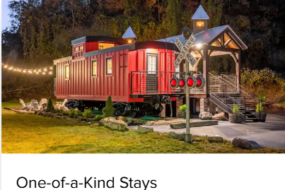
Your hotel room layout doesn’t just determine where you place the furniture. In fact, it’s much more in-depth than that, and it has the power to make or break a guest’s experience.
A hotel room should make guests feel like they can go about their activities just like they would at home. Factors such as square footage, floor configuration, and spacing between outlets all have a huge impact on their ability to function in the area during their stay.
In order to help you tackle the complexities of this process, we’ve created this hotel room layout guide. Keep reading to learn more about how to plan and execute the best possible hotel room layout for your guests.
Your guests have arrived at your hotel with their luggage and a set of expectations for their room. When they walk in, they’ll expect to see a comfortable bed, a place to set their luggage, and at least one area for their coats and/or wardrobe. But if you want to go above and beyond for your guests, you’ll need to design a hotel room layout that anticipates the needs of the types of hotel guests who frequent your property.
There are a ton of ways to creatively arrange a hotel room into a practical yet intuitive layout. But before you start measuring your floor space, begin by reviewing these critical first steps.
Go back to marketing basics. Who are your hotel guests? What audiences do you primarily serve? How can you address overlapping needs from various customer niches with your hotel room layouts? The answers to these questions will serve as the foundation for your layout plans moving forward.
Visualize foot traffic. Assume your average hotel room is occupied by two people at any given time. Consider how they will cross paths from one side of the room to the other. Make sure to think through how they’ll access important shared amenities such as the bathroom and electrical outlets.
Make a list of daily activities. It’s important to consider the different types of activities your guests will do when staying in your hotel room. Families may need space for a cot or travel stroller. Couples may want a better view of the city from the seating area. And business professionals may prefer that the desk faces the window so they can get some sunlight throughout their workday.
Come up with 2-3 guiding words. Pick the top feelings, descriptions, and/or experiences you’d like guests to use when describing your hotel rooms online. As you make choices for your hotel room layout, refer back and make sure your decisions align with the big picture. Words such as relaxing, private, and productive are all great examples.
Consider your goals. Tie your hotel room layout back to your larger hotel brand goals. Think through how each major layout component can creatively fulfill the company mission statement. Bringing these major concepts together can bring clarity even when all the possible options seem arbitrary.
1. Consider legal requirements.
Follow all accessibility guidelines as well as health and safety regulations. These include, but are not limited to:
The placement of electrical appliances in relation to smoke alarms
Bed placements in relation to unscreened yet moveable windows
Square footage by guest number
Hotel room layout laws vary, so refer to your legal and compliance departments for this.
2. Remember proportions.
In older or small hotels, room sizes tend to be limited. And as new-build hotels opt to slim down room square footage in favor of amenities and more rooms, keeping visual proportions in mind will go a long way toward creating a layout that doesn’t feel so cramped. Our diagramming tools make it possible to visualize your hotel room layout so you can explore choices to find the best possible scale. We also offer real-time collaboration, drag and drop elements, photo-realistic 3D rendering, and much more.
3. Mind the gaps.
The spaces between objects and furniture are just as important as the size of the room itself. Details such as the gap between bedside tables and mattresses or bathroom mirrors and the edge of the vanity can make or break a guest’s sense of comfort. If these measurements are off, hotel guests may feel like something is missing. This sense of unease can be avoided by using room layout tools to get the sizing right — down to the centimeter.
4. Designate areas.
Depending on the amount of space available, there should be sections of the hotel room layout dedicated to sleeping, eating, getting ready, and working. If possible, make these zones distinct when coming up with your hotel room layout. If total separation simply isn’t possible, consider which primary areas serve overlapping needs. For example, a desk area may double as a mini kitchen and dining space in smaller rooms.
5. Speak to the senses.
Like hotel lobby layouts, hotel room layouts must also consider the five senses during the idea phase.
- Sight
When you think about sight in relation to your hotel room layout, consider your spaces with fresh eyes. What do you see when you walk into the room for the very first time? Intuitive furniture arrangement, a pleasing color scheme, and artwork that serves as your design focal point are all elements to consider when drawing up your layout. - Smell
The right scent can help create a memorable experience in your hotel rooms. It can also help create a pleasant atmosphere and leave a strong impression. The items you choose to fill the room with scent should be factored into your layout too, as things like real-flame candles or wall plug-ins will need to be accounted for in your design. - If you’re not sure which scents to choose from, follow this complete hotel scene guide, which highlights popular fragrances such as patchouli, lavender, and cedar, as well as the reported benefits and cultural associations to keep in mind.
- Sound
Sound is often a major complaint in hotel room reviews. Whether it’s city noise or a fire alarm, there are many environmental factors that disturb a guest’s experience. Consider what’s within your control.Items such as sound-blocking curtains, white noise machines, and complimentary ear plugs make loud construction noises more tolerable. And design elements that include heavier fabrics and cushy furniture in strategic locations can also make a difference. - Also, take a moment to think about how you can keep sound within the hotel hallways to a minimum. Quiet hours and carpets work like a charm in older buildings, but if there is any planned interior construction, consider adding soundproofing to the walls and floors.
- Touch
In many cases, hotel rooms should mimic the textures and experiences we want from our own bedrooms. This means soft bedding, plush pillows, and couches that don’t get itchy over time. - You should also consider what guests don’t want to touch while they’re in their rooms. For example, touch-free soap dispensers and wireless phone chargers limit the amount of shared items guests have to touch.
- Taste
Hotel rooms offer a variety of food and beverage related amenities that range from coffee pots to in-suite kitchens. Even if you don’t have flexibility in your hotel room layout, it’s important to consider offering extras. For example, if your rooms are small but you’d like to add a mini fridge where guests can store leftovers, consider adding a stationary cart to the space to house the machine.
We spoke to several industry experts to add these great tips to the mix.
1. Create separation.
“As a home interior designer myself, I’m always fond of designing homes that are based on hotel rooms because they are designed to be cozy and relaxing, which is best for any home,” said Lily Willi, Founder and Designer at Ever Wallpaper, in an interview with Social Tables.
“As for me, I would place a divider across the door. This is for the privacy of the rentee when asking for a home service. This is something that I always think of when I’m staying in a hotel room.”
If you can make structural changes, design elements such as arches go a long way toward separating living areas. “Most hotel rooms will just have a singular room with all the facilities in them (i.e. a bed, wardrobe, desk, and coffee-making equipment), and then they will have the bathroom separately,” Jim Campbell of Honeymoon Goals told Social Tables via email.
“However, a lot of rooms will have the bed in one room, and then a large archway that separates that room from the rest of the facilities. This doesn’t exactly split the rooms up, however, it gives a feel of two separate rooms and people then think that they are getting better value for money when buying a room.”
2. Focus on flow.
Much of your initial hotel room layout ideas should be intuitive. In a conversation with Social Tables, Claudine Hart, Marketing Director of reStays Ottawa, spoke about creating an inviting atmosphere.
“When a traveler first walks into the room you’ve designed, they will quickly make a judgment call and decide whether they like the room or not,” says Hart. “You need to focus on the look of the room as a whole as soon as you walk in the door. Does the room flow nicely or look cramped? Is the bed highlighted as the focal point or is it another design element?”
“Questions will run through travelers’ heads as they enter your hotel room,” advises Hart. “Answer them well.”
How does her own hotel answer them? “reStays offers bright and airy suites that are far bigger than your average size hotel room. All of our suites have a window or patio door that can be opened, allowing for fresh air and accentuating that feeling of owning your space.”
3. Get inspiration from nature.
Kelly Wearstler is an interior designer known for creating the relaxed and beachy style of the Santa Monica Proper hotel. In an interview with Dezeen magazine, Wearstler said she brought the outdoors in using the following elements:
Eclectic patterns in neutral colors bring in elements of asymmetry often seen in nature
Large greenery placed on the floor or bedside tables make it feel more like a home than a hotel
Soft edges and round shapes bring in soothing natural vibes. For example, Wearstler used a round reception desk that’s reminiscent of a seashell
Choosing wood as your main element for headboards and countertops makes the room feel more earthy
Create an award-winning hotel room layout today!
Want even more hotel design inspiration? Check out our best advice for hotel background music that will create the perfect atmosphere for your guests as soon as they enter the lobby.








